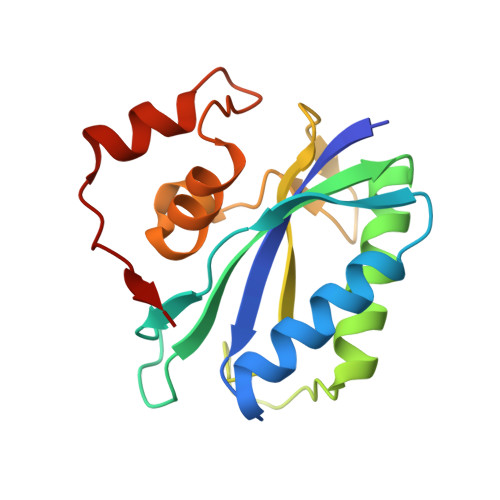The identification, analysis and structure-based development of novel inhibitors of 6-hydroxymethyl-7,8-dihydropterin pyrophosphokinase.
Yun, M.K., Hoagland, D., Kumar, G., Waddell, M.B., Rock, C.O., Lee, R.E., White, S.W.(2014) Bioorg Med Chem 22: 2157-2165
- PubMed: 24613625
- DOI: https://doi.org/10.1016/j.bmc.2014.02.022
- Primary Citation of Related Structures:
4M5G, 4M5H, 4M5I, 4M5J, 4M5K, 4M5L, 4M5M, 4M5N - PubMed Abstract:
6-Hydroxymethyl-7,8-dihydropterin pyrophosphokinase (HPPK) is an essential enzyme in the microbial folate biosynthetic pathway. This pathway has proven to be an excellent target for antimicrobial development, but widespread resistance to common therapeutics including the sulfa drugs has stimulated interest in HPPK as an alternative target in the pathway. A screen of a pterin-biased compound set identified several HPPK inhibitors that contain an aryl substituted 8-thioguanine scaffold, and structural analyses showed that these compounds engage the HPPK pterin-binding pocket and an induced cryptic pocket. A preliminary structure activity relationship profile was developed from biophysical and biochemical characterizations of derivative molecules. Also, a similarity search identified additional scaffolds that bind more tightly within the HPPK pterin pocket. These inhibitory scaffolds have the potential for rapid elaboration into novel lead antimicrobial agents.
- Department of Structural Biology, St. Jude Children's Research Hospital, Memphis, TN 38105, USA.
Organizational Affiliation:




















